How Do I Figure Out Which Bitcoin Fork Coins I Own?

Introduction
This guide will explain the steps involved in how to securely figure out if you have any bitcoin forked coins from one or more of the many bitcoin fork projects. If you are unsure of what a Bitcoin fork is please read our What Is A Bitcoin Fork? guide on that first.
An example of a simple solution is to use one of the number of sites/services that claim to automate the process of finding your coins for you. Your public bitcoin addresses are still private info. Without considering the risks of doing so, you should avoid giving up this information to others. As you are probably aware, your browser's tracking cookies and your public IP address can be correlated to your street address and social media profiles. If you are doing web queries involving a set of Bitcoin addresses, those can also be correlated in to that dataset. To help be safe, arm yourself with some knowledge before jumping in.
Also, recognize that automated tools may do an imperfect job as there are always new forks coming out and it is no small effort to keep up (though we try at forkdrop.io).
Forkdrop.io Fork Block, Fork Date and Fork Type
Each fork is a different project that makes different choices. The first step is to get a view of this information. forkdrop.io is the best summary view that we know of (though we might be biased).
A critical part of figuring out whether you own coins of a particular fork or airdrop is block of the Bitcoin main chain that the project chooses to fork for snapshot from. They are listed for each coin in the Block column on the main page of this website:
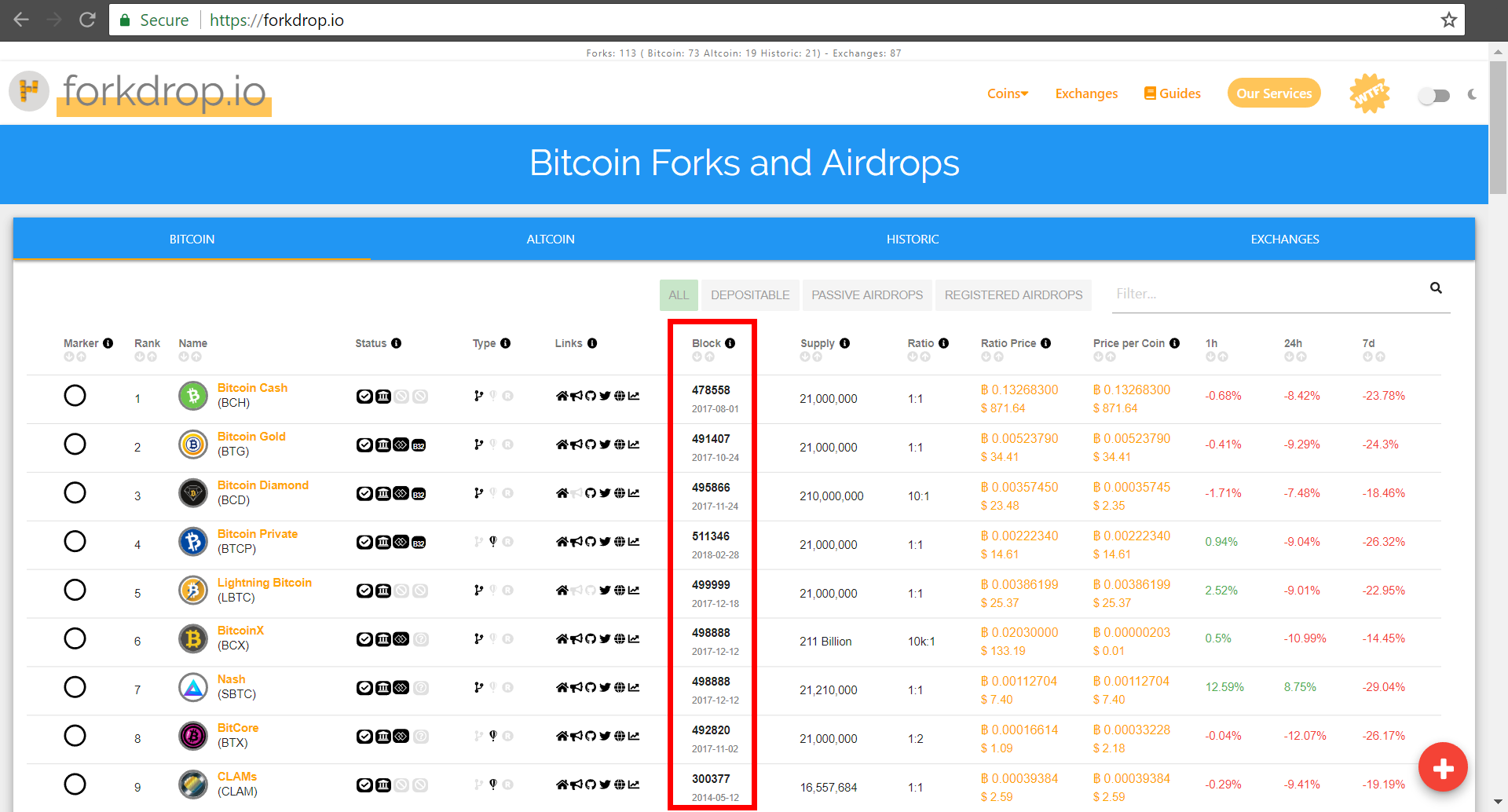
In Bitcoin airdrops, this instruction may not apply cleanly. As is the nature of airdrops, the design is not fixed and many projects make many different choices. However, on the main page, we have provided the most relevant block and date for that airdrop project.
A natural fork is one that is built upon blocks which are also included in the Bitcoin blockchain. On the forkdrop.io table the nature of the fork is represented as icons and displayed in the 'Overview' column. The tooltip on the header explains the icons we use to represent the attributes:
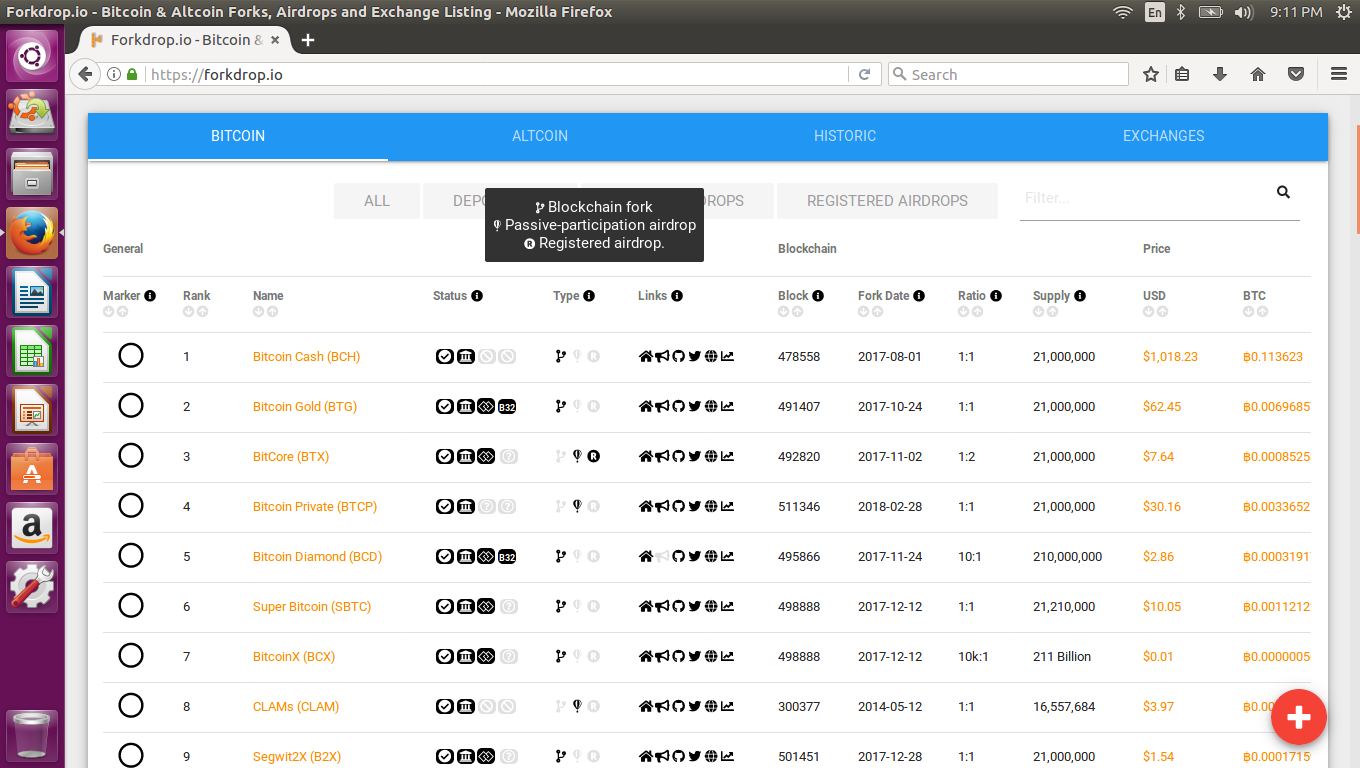
In the image, it can be seen that BitCore (BTX) and Bitcoin Private (BTCP) are not natural forks, but most of the other top fork coins are. For more info on this distinction see our other articles:
Balances That Are Credited on the Forked Chain
To understand whether you have fork or airdrop balances, you need to contemplate the timing of your possession of BTC with respect to the fork or snapshot block.
If you just bought BTC recently and/or just took possession of a BTC balance with private keys that you hold, you likely do not have balances for the majority of the current forks. The scenario looks like this:

The forked blockchain is operating independently of the BTC main chain and the post-fork-point transactions on each don't affect the other.
Similarly, if you had an address holding BTC before the fork point, and it was also spent before the forked point, it does not get credited with forked coins:
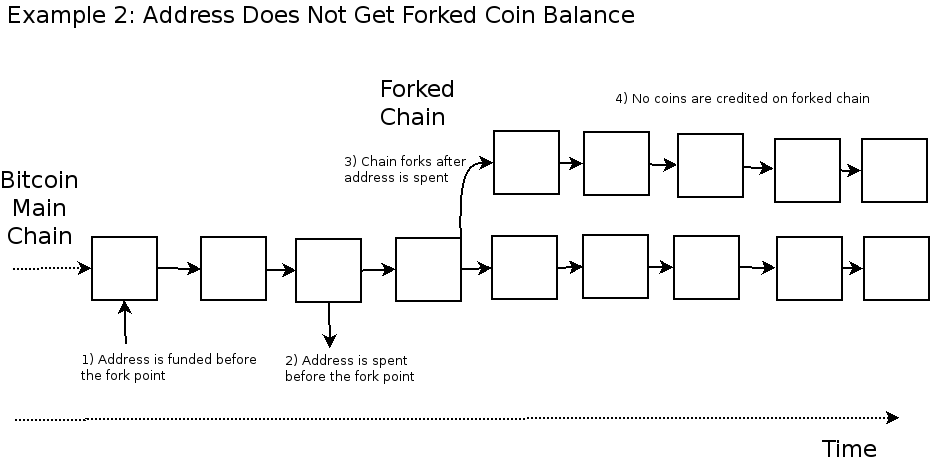
The addresses which get credited with the forked coin balances are those that held BTC at the fork point. If the BTC was spent after the fork point, those addresses that show a 0.0 BTC balance may still have forked coins.
After the fork point, the transactions occur independently:

For discovering whether you hold balances of these forked coins or not, you need to be aware of three things:
- 1) The block where the BTC balance was funded.
- 2) The forked block.
- 3) Which block the BTC balance was spent (if it is not unspent at present).
Another oddity to be aware of is that the private keys for BTC have corresponding addresses which are valid for both chains. Some people may choose to transact on both chains with the same address and that is perfectly valid.
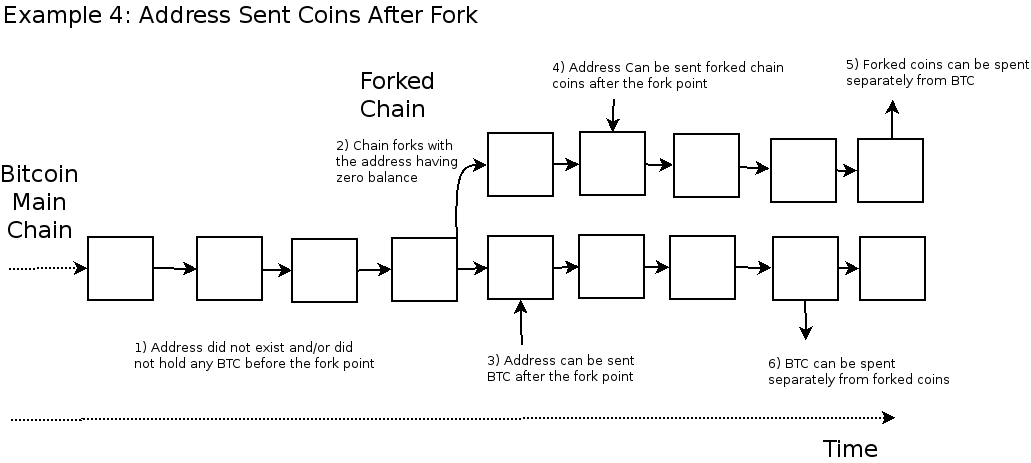
Understandably, this can get confusing if you are not keeping close track. Using a block explorer can help find balances if you have not kept close track of them, but to preserve your privacy, it is important that you take precautions which will be covered next.
This Looks Horribly Complicated
Yep. But less so if you just have a single Bitcoin storage address and a simple transaction history and only need to go through this once. If this process becomes overwhelming because you have many addresses and/or a complicated past transaction record, Forkdrop Suite is a set of tools that helps you automate this process in a secure any private way. It is more of a professional-grade tool, so it requires an existing skillset or additional investment of time to learn. Fortunately, we provide many guides to help you out if you choose to go down this path:
-
What is Forkdrop Suite For?
Using Forkdrop Suite To Find My Coins
Using Forkdrop Suite For Preparing to Claim Bitcoin Fork and Airdrop Value
Intermediate's Guide To Efficient Fork Value Claiming and Record Keeping
In any case it is necessary and worthwhile to understand the concepts and the process of doing this manually which we will continue to cover below:
Privately Using Blockchain.info
Without knowing anything about your personal situation, we want this guide to be the best advice for protecting your privacy and safety. Hence, we recommend you use a block explorer only by Tor Browser in order to protect your privacy and anonymity.
Tor Browser can be downloaded and installed for your particular OS. This is a browser enhanced security and privacy that routs all traffic through The Onion Router which is a tool built especially for sensitive tasks that should be private.
To take further precautions against malware such as keyloggers, we also have a pair of guides for setting up a Linux-based temporary live boot session and installing and running Tor Browser:
To Blockchain.info has maintained a Tor access point for using their block explorer and API anonymously. Other block explorers may be built specifically with a business plan for tracking and selling user information. You can access Blockchain.info by pointing your installed instance of the Tor Browser at their onion address (.onion links only works when accessed from the Tor Browser):
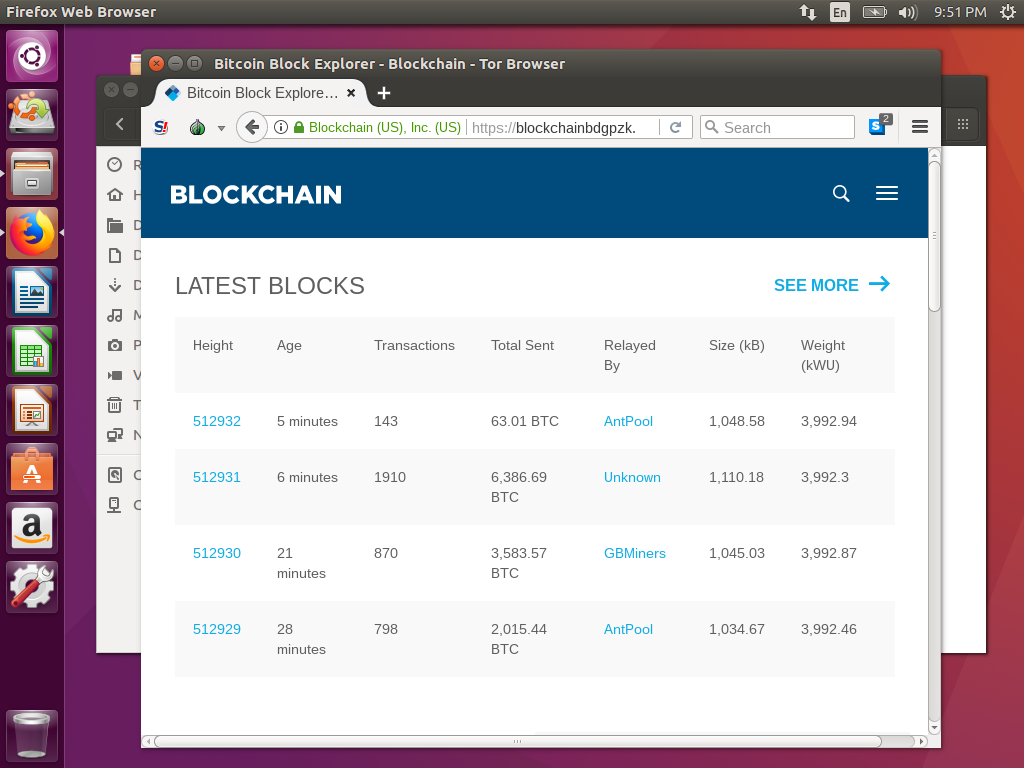
Problems?
Looking Up Your Addresses
If you don't recall your addresses because you have not kept complete records, or may have done a lot of transactions without thinking too much of keeping track, your first task might be to reconstruct what your public addresses and private keys were in the past. This is a bit of an advanced topic, but we do have a guide for that where Ian Coleman's BIP39 tool can be used to recover public addresses and private keys from a seed phrase in a relatively safe manner if you take precautions.
If you do have a list of your addresses that you still control that currently or previously hold BTC on them, you can enter them in the block explorer. The task is to understand the height of the block that first funded the address with some BTC and the height of the block that spent the last of the balance sent to that address. If these two transactions straddle the fork point for a particular forked coin as was the scenario in the Example 3 image above, you have a balance of the forked coin.
For example, we will use address:
1MrpoVBweTnwPTase83S13LSZZ2Ga4Amk7
On blockchain.info we can see that on October 1st, 2017, it was credited 0.272 BTC. On February 2nd, 2018, that 0.272 BTC was spent away from this address:
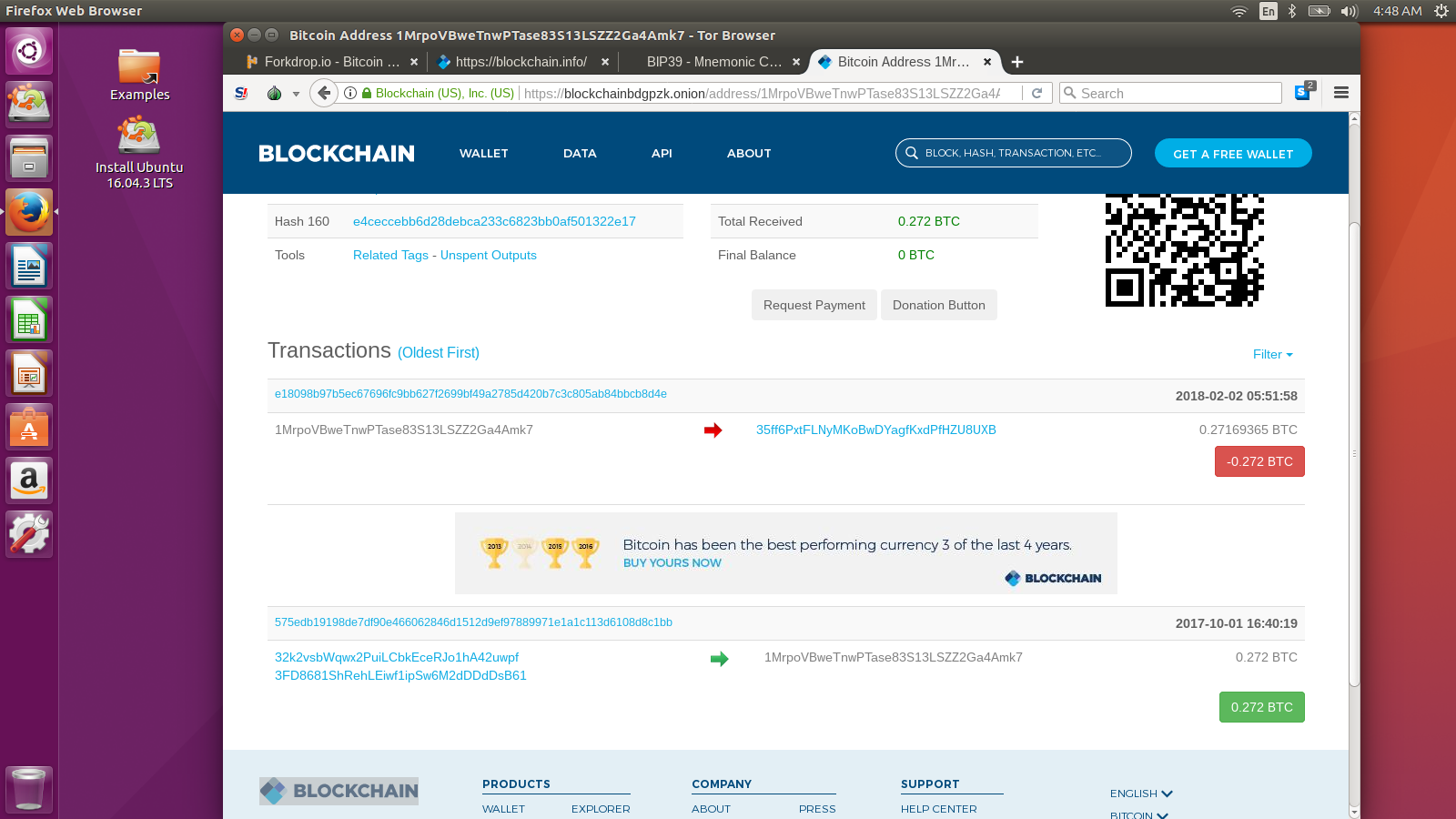
The first large hexadecimal number in the transaction listings are the Transaction ID. This is necessary value to record for privately and securely redeeming the coins. The overall task of redeeming the value is covered in a comprehensive set of guides and recording the Transaction ID is an necessary step for preparing. If we click on the top Transaction ID, we get a view that looks like this:
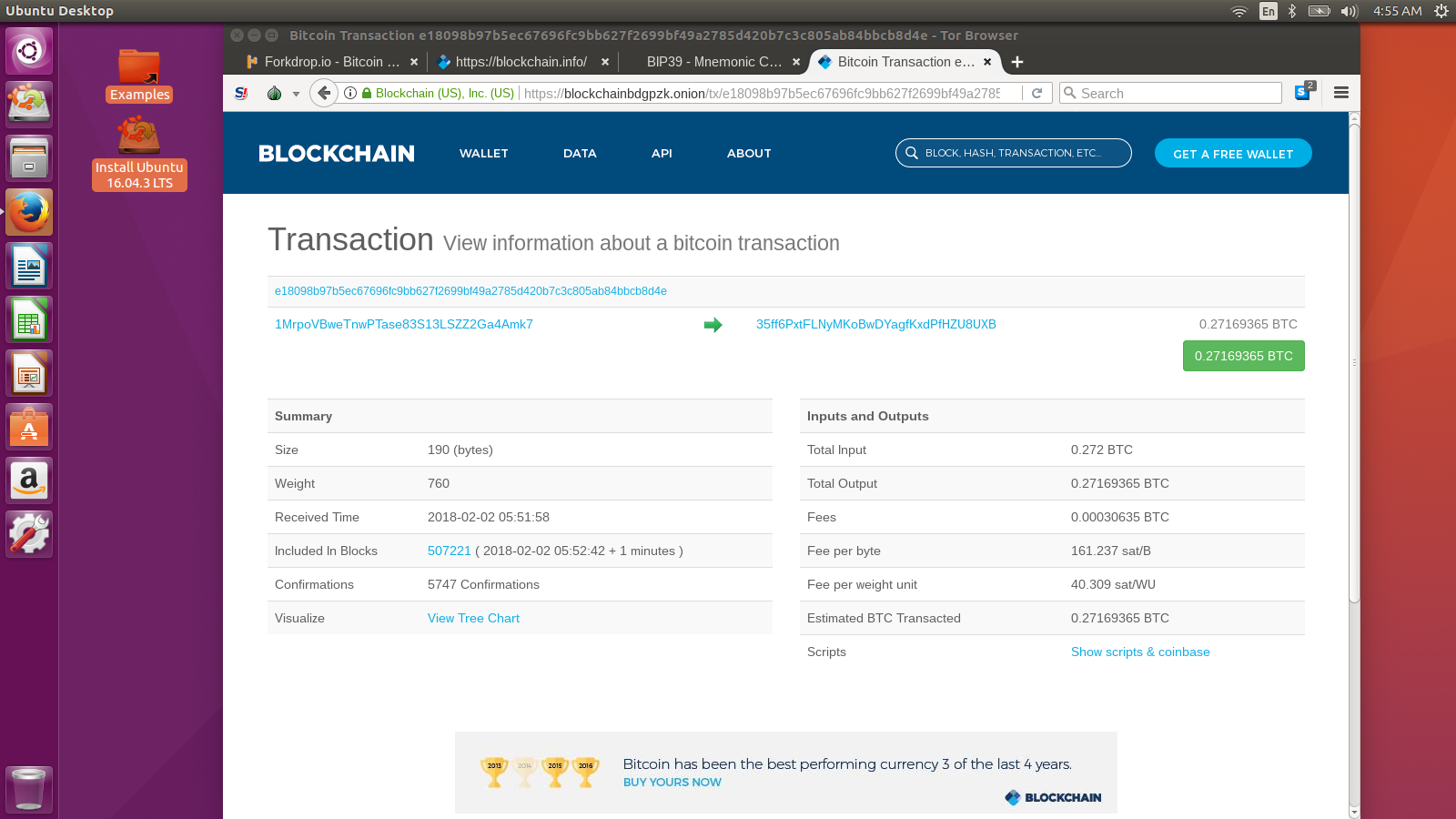
By looking at the two transactions for this address we can then discover that the transaction that funded this address was mined on block 487841 and the one that spent it was mined on 507221. We can then take those two values to the table on the main page of forkdrop.io and discover that this is too late to qualify for the Bitcoin Cash fork (block 478558) but covers the Bitcoin Gold fork (block 491407) and many of the other forks.
If you find you have an address like this, do take the time to copy down the full Transaction ID which funded the address, as it will be useful for redeeming your forked coins later and it would be a shame to have to repeat the work of looking this up again later.
If you are running on a secure, temporary, live-boot Ubuntu session as we recommend, you may have to set up a USB flash storage drive in a secure manner in order to save this data in a file:
Ok, I Have Some Forked Coins, How Do I Get My Money?
You are in luck. We wrote a comprehensive guide for safely and securely claiming your value: